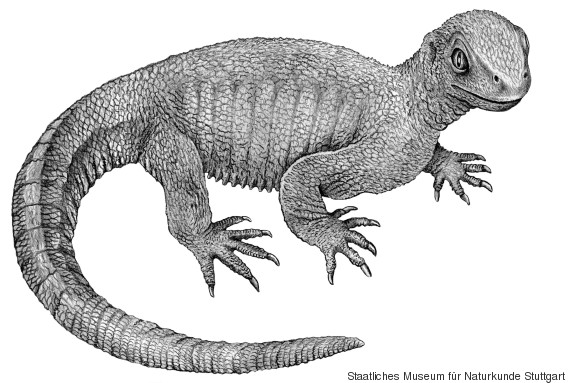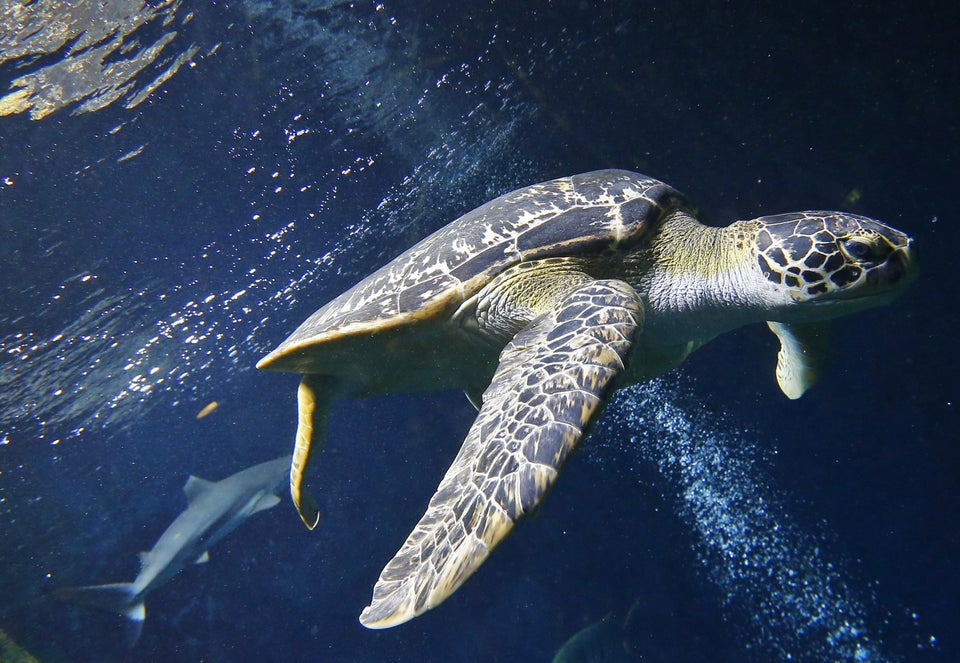An ancient reptile that doesn't have a shell is an important link in the evolutionary history of the turtle, according to new research.
The fossilized remains of the newly described creature, named Pappochelys rosinae, were found in the south German state of Baden-Württemberg and are believed to be about 240 million years old, according to a study published in Nature on Wednesday.

The reptile had a small skull with a short, pointed snout and was about eight inches in length at full size, with a long tail.
Researchers from Germany and the United States studied more than a dozen P. rosinae samples collected since 2006. Most of the fossils are small, incomplete remains but scientists were able to put together a full skeleton and the majority of a skull, according to Science Magazine. The remains were found in an area that was once a lake, indicating the creature was aquatic.
The new genus, Pappochelys, is believed to be an intermediary between the more primitive Eunotosaurus and Odontochelys, the first known turtle species. While the latter still lacked a full turtle shell as we know them, Odontochelys did sport a hard, flat underbelly, or plastron, like today's turtles. The new Pappochelys species lacks a plastron, but the bones on its underside are more developed and closer to fusing together than in Eunotosaurus.
“The mystery of how the turtle got its shell has been a long-standing question in evolutionary biology,” Hans-Dieter Sues, curator of vertebrate paleontology at the Smithsonian’s National Museum of Natural History and a study co-author, said in a press release. “In the case of Pappochelys, we see that its belly was protected by an array of rod-like bones, some of which are already fused to each other. Such a stage in the evolution of the turtle shell had long been predicted by embryological research on present-day turtles but had never been observed in fossils -- until now.”
The rib-like plastron precursor bones were a giveaway that the scientists found something unique, Sues told NPR. "This is not a kind of rib that you find in anything else," he said. "We were certain that we had found a very important new thing, and we went out and had a couple of celebratory beers, in good German fashion."


